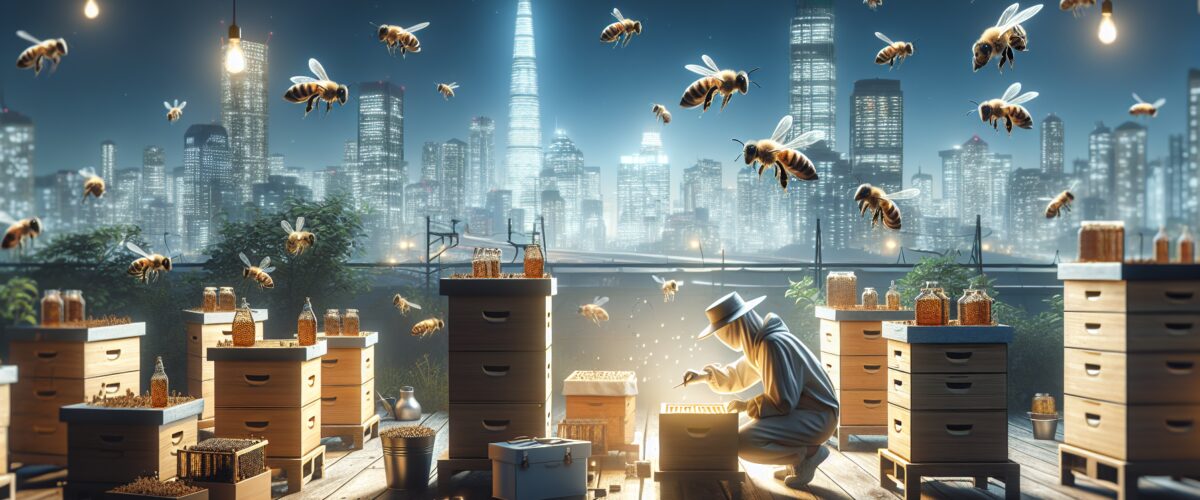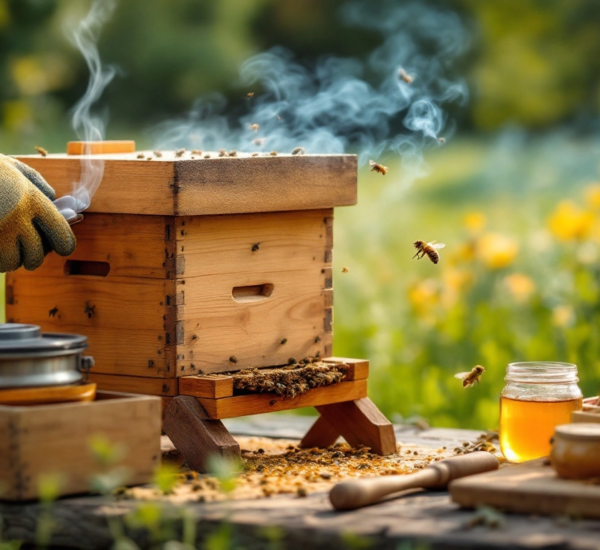Imagine producing your own honey right above the bustling streets of your city. Rooftop beekeeping, an innovative and eco-friendly practice, allows urban residents to transform unused rooftop spaces into thriving pollinator sanctuaries. As our cities grow, so does the need to support dwindling bee populations, and rooftop beekeeping is emerging as a powerful way to combat “pollination deserts” while promoting sustainability. In this comprehensive guide, we’ll explore the essentials of a rooftop beekeeping setup, rooftop hive maintenance tips, the benefits of urban rooftop beekeeping, and how to overcome the unique challenges that come with this rewarding activity.
Table of Contents
- What Is Rooftop Beekeeping?
- Setting Up Your Rooftop Beehive
- Top Tips for Rooftop Hive Maintenance
- Benefits of Urban Rooftop Beekeeping
- Overcoming Rooftop Beekeeping Challenges
- FAQs About Rooftop Beekeeping
What Is Rooftop Beekeeping?
An Overview of Rooftop Beekeeping as an Urban Trend
Rooftop beekeeping is the practice of maintaining bee colonies on city rooftops, offering a unique way to produce honey while supporting local ecosystems. Historically, beekeeping has been a rural activity. However, as urbanization grows, so does the need to compensate for the declining green spaces and pollinator habitats. Cities such as New York, London, and Tokyo have seen significant growth in this trend, with rooftop beekeepers contributing to an increase in urban biodiversity.
This practice plays a crucial role in addressing the global decline of bee populations. By providing a safe haven for bees in the heart of urban areas, rooftop beekeepers help mitigate the effects of habitat loss and pollution. Learn more about the importance of urban pollinators.
Why It’s an Eco-Friendly Practice
Rooftop beekeeping promotes sustainability by creating microhabitats where pollinators can thrive, even in densely populated areas. Bees contribute to the pollination of flowers, trees, and crops, boosting the health of urban ecosystems. Additionally, rooftop hives reduce the impact of “pollination deserts” by enabling honeybees to access forage sources like community gardens and urban green spaces.
By contributing to global bee conservation efforts, rooftop beekeeping empowers individuals and communities to play an active role in promoting sustainability and environmental stewardship.
Setting Up Your Rooftop Beehive
Choosing the Right Hive for Your Rooftop
When selecting a hive, consider factors such as the available space, structure, and weight capacity of your rooftop. Popular hive options include Langstroth, Top-Bar, and Flow Hives, each with unique features. Langstroth hives are suitable for high-volume honey production, while Top-Bar hives are easier to manage and ideal for beginners. Check out the best hive designs for urban environments.
Preparing Your Rooftop for Beekeeping
Before setting up your hive, ensure your rooftop can support the weight and activities of beekeeping. Conduct a structural safety assessment and reinforce the area if needed. Additionally, check local regulations and secure any necessary permits to ensure compliance with urban beekeeping laws. Some cities may require a minimum distance between hives and public areas.
Furthermore, create a windbreak and shade to protect your bees from harsh weather conditions while ensuring they have access to forage plants within a two to three-mile radius.
Essential Equipment and Tools
To get started with rooftop beekeeping, you’ll need essential tools and equipment, including:
- A durable hive suited for urban environments.
- Protective gear, including a beekeeping suit, gloves, and veil.
- Hive tools such as smokers, feeders, and extraction equipment.
- Frames and foundation for the hive interior.
With these essentials in place, you’ll be ready to build a thriving rooftop apiary.
Top Tips for Rooftop Hive Maintenance
Inspecting Your Bees Regularly
Consistent hive inspections are vital to ensure the health and productivity of your bees. During inspections, check for signs of disease, pests, or other issues affecting the colony. Look for active queens, healthy brood patterns, and sufficient honey stores. Learn about common pests and how to manage them.
Seasonal Care for Rooftop Beehives
The needs of your hive will change with the seasons. In spring, focus on colony expansion and preparation for the nectar flow. During summer, monitor hive activity and ensure the colony has enough forage. In fall, prepare the hive for overwintering by consolidating honey stores. Winter requires additional protection against cold temperatures and wind exposure.
Harvesting Honey and Hive Products
When harvesting honey, ensure your bees have enough reserves to sustain themselves. Use a honey extractor to remove honey gently, and follow any legal regulations for selling processed products. Beyond honey, consider utilizing beeswax and propolis as valuable byproducts.
Benefits of Urban Rooftop Beekeeping
Environmental Benefits
Rooftop beekeeping enhances urban biodiversity by creating habitats for essential pollinators. As more rooftop hives are established, flowering plants and green spaces benefit from increased pollination, improving the health of urban ecosystems.
It’s also a direct response to the global “pollination crisis,” which has severe implications for agriculture and food security. Read more about pollinator conservation efforts.
Personal and Community Rewards
Beekeeping on your rooftop not only provides fresh, organic honey but also fosters a connection to nature in an urban setting. Additionally, rooftop beekeeping can enhance community awareness about environmental issues, fostering collaboration and creating educational opportunities.
Impact on Urban Green Spaces
Hives encourage better vitality in nearby gardens, parks, and other green spaces by improving pollination rates. This, in turn, helps beautify neighborhoods and promotes ecological balance in cities.
Overcoming Rooftop Beekeeping Challenges
Addressing Urban Space Constraints
Working with small rooftop areas requires strategic design choices, including compact hive setups and efficient use of vertical space. Installing wind barriers and shade can address exposure issues common on rooftops.
Resolving Urban Legal and Safety Issues
Every city has unique guidelines for rooftop beekeeping. Understand local ordinances and licensing requirements before starting. Building positive relationships with neighbors is also essential to ensure safety and address potential concerns.
Managing Common Rooftop Hive Problems
Urban hives face challenges like air pollution, limited forage, and pests. Mitigate these issues by planting pollinator-friendly plants nearby and maintaining vigilant hive inspections to detect and treat issues early.
FAQs About Rooftop Beekeeping
How do I start a rooftop beekeeping setup in my city?
Begin by ensuring your rooftop is safe and compliant with local laws. Choose a suitable hive and gather essential equipment before introducing your bees to their new environment.
What challenges should I expect with rooftop hive maintenance in urban areas?
Urban beekeeping challenges include limited space, exposure to pollutants, and navigating legal regulations. Proper preparation and ongoing hive management can help address these issues.
Can I keep bees on a rooftop without a large space?
Yes! Compact hives and efficient designs make it possible to keep bees in small spaces. Maximize your use of vertical and modular designs for best results.
What environmental benefits can urban beekeeper hives provide?
They help combat pollination deserts, enhance biodiversity, and maintain healthier urban green spaces through increased pollination.
Is urban rooftop beekeeping safe for neighbors?
Yes, when done responsibly. Ensure your hive is properly located, maintained, and complies with local regulations to keep everyone safe.
Conclusion
Rooftop beekeeping transforms urban areas into sustainable havens for pollinators while providing benefits like fresh honey, community engagement, and increased biodiversity. Though challenges like space and legal compliance exist, with careful planning and maintenance, you’ll enjoy a thriving rooftop hive. Ready to help your city flourish? Start your rooftop beekeeping journey today!




